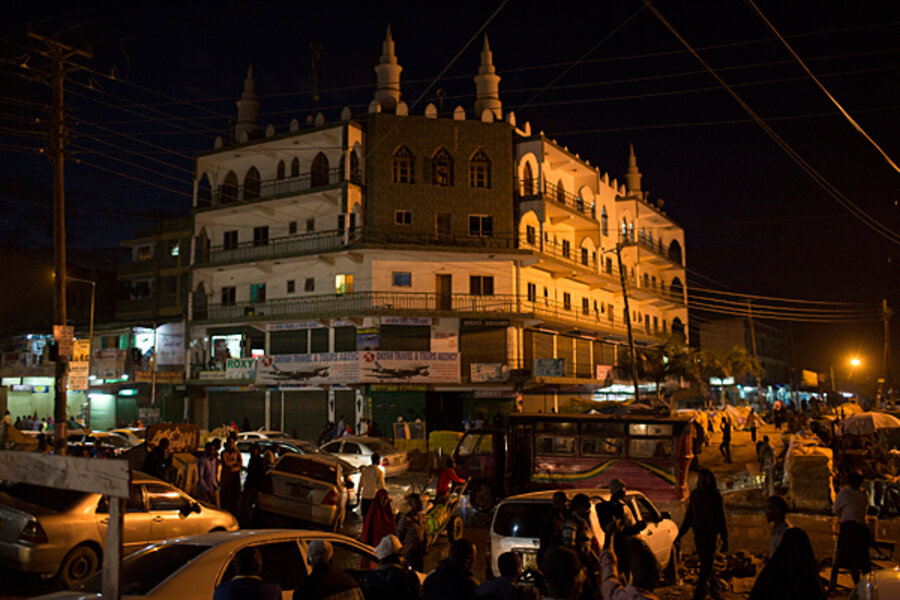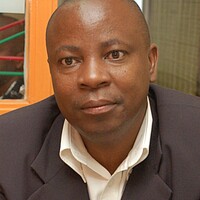After Westgate Mall attack: Al Shabab penetrates even to Kenya high schools
Loading...
| Nairobi, Kenya
Norwegian and Kenyan authorities are now seeking to uncover the networks of a well-known Al Shabab militant – said to hail from the Scandinavian nation – found dead in the bloody rubble of Westgate Mall.
But new leaks in Nairobi suggest the radical jihadi message of the Somali-based group is being promulgated much closer to home: In local madrassas and even in some prominent mainstream Kenyan high schools.
The revelations of jihadi recruitment in Kenyan schools adds to a picture – weeks after nearly 70 people were shot and killed at Westgate – of a more extensive underground network of Al Shabab in Kenya than had been understood by the public. And it partly centers around well-known mosques.
But their alleged presence in schools is a new wrinkle: In an unusual National Intelligence Service report, apparently written in late September and leaked to the Kenyan media last week, Al Shabab and other radical actors are described as lecturing and recruiting in schools, mosques, and in “slums” around the Eastleigh area of Nairobi that is often called “Little Mogadishu,” where Somali refugees gather and live.
Islamic scholars described in the report as “radical” have also conducted lectures in some of the better academic high schools in Kenya, including the armed forces-run Moi Forces Academy, State House Girls, Limuru Girls, St. George’s Secondary, and Aga Khan High School in Nairobi.
Much of the recruitment according to Kenyan security agencies has occurred in schools near Eastleigh. The report names schools including the Nairobi Technical, the Highway Secondary, and Eastleigh High.
The school phenomenon is still considered a small or modest one, and the extent of how "radical" some of the messages are is not well demarcated. What passed for radical in some schools, in the language of the report, was stated as: "the effect of the [Islamic] lectures are being felt with some [female] students demanding they be allowed to put-on or wear the hijab [or veil]."
Yet worries exist the messages could have a more potent or radicalizing effect.
An established network of traders and suppliers that support Somali or Al Shabab causes may include around 2,500 people, security sources say. Some of the anger in the Somali community noted by counter terrorism experts in the report, moreover, has to do with what is called a "politicized crackdown against illegal aliens, especially Somalia nationals who have invested heavily in Nairobi, Mombasa and Garrisa.”
The Sept. 28 mall siege left an estimated 70 dead and 240 injured as self-described Islamic radicals toting guns shot up an upscale shopping center popular with expats and upper- and middle-class Kenyans.
During the siege, Al Shabab militants said over Twitter that the attack and similar attacks would continue until Kenyan troops withdrew from an African Union mission in next-door Somalia where they have been displacing Al Shabab forces from urban areas since 2011.
On Oct. 7 local detectives arrested a student in Nairobi over suspected links to Al Shabab. He had been mentioned by some of the nearly 40 suspects that Kenya’s Anti-Terrorism Police Unit has arrested and questioned so far.
Moderate Muslim leaders themselves in recent weeks have been agreeing that forms of radicalization are taking place in schools and some mosques. There have been calls for a “unified” Islamic curriculum to stop various streams of indoctrination.
Some Muslim leaders have supported a vetting of teachers to avoid extreme views filtering down to impressionable students. Sheikh Juma Ngao, a senior Muslim figure in Mombasa is calling for civic education for teachers and students on terrorism and its signs.
“We need [to] equip teachers and students with knowledge about terrorism since many don’t know the signs. The teachers also need to be aware of the lectures and sermons that brainwash and radicalize students,” says Sheikh Ngao.
The head of Kenya’s National Parents Association offers that, “It is a serious issue especially when the madrassas are not part of the national school curriculum. Those who lead the classes are not trained teachers either. In this scenario, radical preachers can easily plant militancy in the young minds of students.”
Mohammed Madobe, a Somali national who monitors horn of Africa developments from Kenya, says that Al Shabab has penetrated deeper into Kenya than realized.
“Kenya is highly infiltrated by Al Shabab and its associates. It is not only the thousands who can shoot a gun and throw grenades, but a network of businessmen, suppliers and associates who facilitate its work,” says Mr. Madobe, who has lived in Nairobi and Dadaab refugee camps for several years, and where he supports international agencies that carry out research and organize help for Somalia.
With the Kenyan troops gaining ground against the militants, some of the recruits moved out to target East African cities and towns in a new strategy of urban welfare. Moving small groups, their instruction is to hit “soft targets” and cause maximum deaths and injuries, according to several analysts.
“They see themselves as 'holy fighters' who are returning after a long holy journey. They are very lethal,” says Madobe.
Recent attacks by militants confirm the network, according to Simiyu Weruga a former Army captain at the African Center for Security and Strategic Studies. Mr. Werugo says that dismantling the Somali-based network should be a first priority.
“We should not at anytime imagine they are divided,” he says. “They have members from the [Somali] diaspora who have the technical know how and the education."
Al Shabab’s recruitment appears in some instances to have moved past local mosques to include non-Somali communities.
But Nairobi’s oldest mosque, the Masjid Pumwani Riyadha in the Majengo slums and the Maratib mosque in Eastleigh allegedly are main places of radicalization and recruitment.
“Little Mogadishu” in Eastleigh has more than fifty madrassas that have seen increasingly radical teachings, according to Madobe.
In Mombasa, two mosques were named in the report. The radical Islamic cleric, Sheikh Aboud Rogo, accused of arranging funding for Al Shabab before he was gunned down early last month by unknown assailants, frequently preached at Masjid Musa Mosque.
Al Shabab has “infiltrated” mosques in a number of far-flung Kenyan towns including Eldoret, Kitale, Maralal, Isiolo, Maua, Migori, Mumias, Oyugis, Kisii, Kiambu, and Busia, according to the report.








